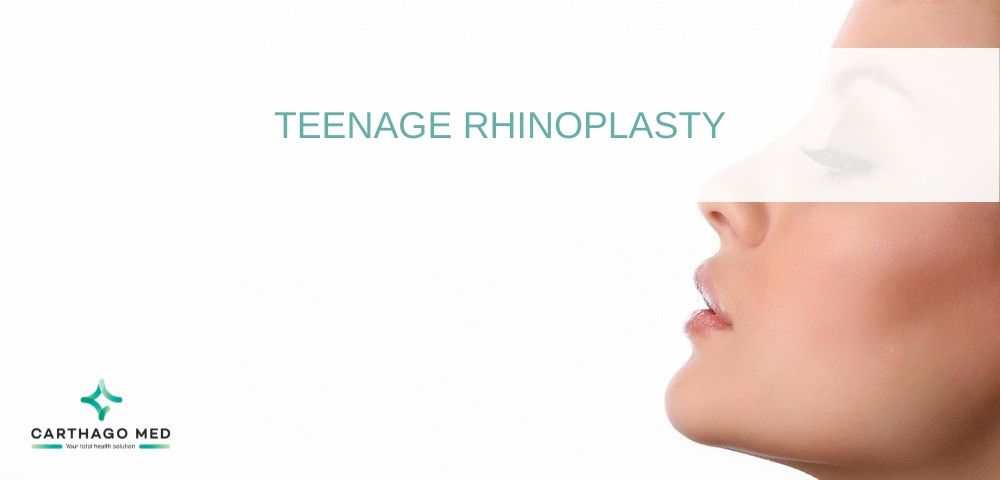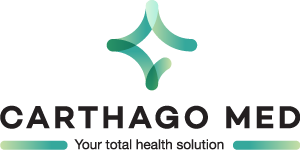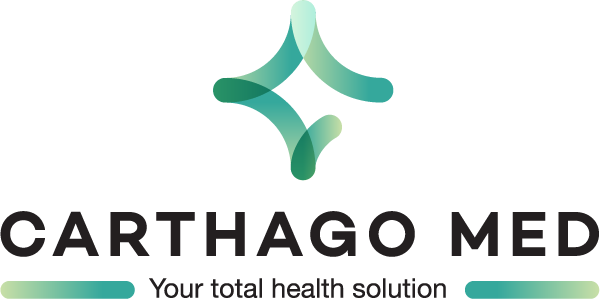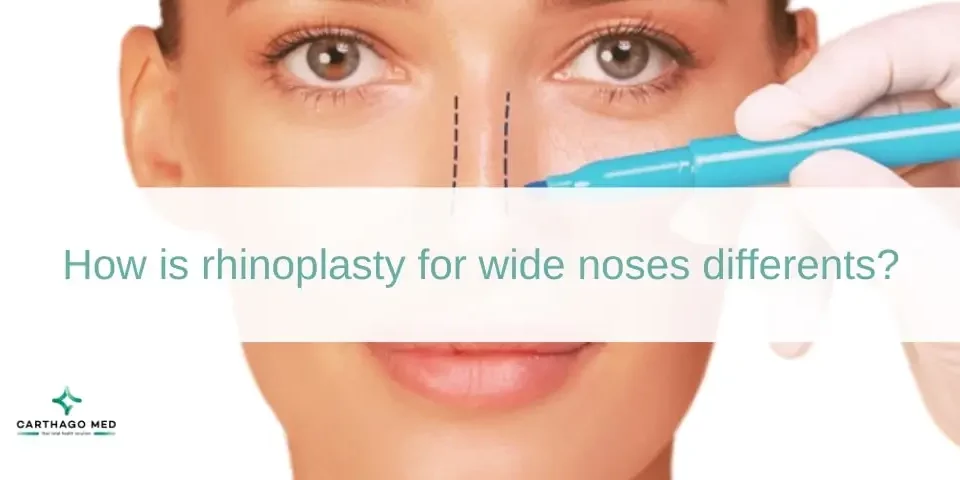
Teenage rhinoplasty
While cosmetic surgery is nowadays more commonly underwent by adults, more and more teenagers feel the need to do it to correct certain imperfections that they feel insecure about. What is the most requested cosmetic surgery by teenagers?
Rhinoplasty, with no doubt. The surgery aims at reshaping the nose and correcting its imperfections. It gives the patient the chance to remodel their nose according to their wishes. The objectives of the procedure vary according to need (removing an unpleasant bump, reducing the size of the nose, or refining the tip). With that said, what is the minimum age to undergo a rhinoplasty? And what results should the patient expect?
Why is teenage rhinoplasty becoming more common today?
The increasing prevalence of teenage rhinoplasty today is shaped by a complex interplay of societal, cultural, and individual factors that have evolved over time. This surge can be better understood by examining the driving forces behind it, shedding light on the motivations of adolescents seeking cosmetic enhancements. One key factor is the evolving landscape of beauty standards, influenced significantly by media portrayal and celebrity culture. As these standards continue to shift, teenagers find themselves more exposed to idealized facial features, exacerbated by the omnipresence of social media platforms that often emphasize appearance and contribute to a heightened desire for aesthetic improvements.
Moreover, the accessibility of information through the internet has empowered teenagers to become more informed about cosmetic procedures. Educational resources, including reputable medical websites and social media discussions, play a crucial role in raising awareness about the possibilities of rhinoplasty. Positive representations of successful procedures among celebrities and public figures serve as influential role models, normalizing cosmetic enhancements in the public eye and potentially reducing stigma, thus making teenagers more open to considering rhinoplasty. Advancements in surgical techniques and technologies have also played a significant role in the increasing popularity of teenage rhinoplasty. These innovations have made the procedure safer, more precise, and with reduced recovery times, making it more appealing to both teenagers and their parents. Additionally, the psychological impact of facial appearance on self-esteem is increasingly acknowledged, with teenagers viewing rhinoplasty as a means to align their physical features with their self-perception, ultimately boosting their confidence.
Parental attitudes and support also contribute to the growing acceptance of teenage rhinoplasty. Parents today may be more open to discussions about cosmetic surgery, recognizing its potential positive impact on their teenager's emotional well-being. Increased dialogue between parents and teenagers, facilitated by shifts in societal attitudes, creates a more supportive environment for considering rhinoplasty as a viable option. Furthermore, the cultural landscape has become more accepting of cosmetic procedures, contributing to the normalization of rhinoplasty. Cultural influences and the globalization of beauty standards play a role in fostering a more normalized view of cosmetic surgery. Surgeons specializing in facial plastic surgery for teenagers, such as Dr. Julian De Silva, offer tailored solutions that address the unique needs and concerns of this age group. The availability of skilled professionals who understand the nuances of teenage rhinoplasty further contributes to its growing acceptance in contemporary society.
What is the minimum age requirement for undergoing a rhinoplasty?
Determining the appropriate age for a teenager to undergo rhinoplasty involves a comprehensive evaluation encompassing medical, psychological, and ethical considerations. While a universal age threshold may not exist, certain fundamental factors play a crucial role in establishing a minimum age requirement for this cosmetic procedure. One pivotal aspect is the physical development of the teenager. It is imperative to wait until their facial features have substantially matured to avoid potential complications and achieve satisfactory results. The timing of rhinoplasty is closely tied to the completion of facial growth. Emotional maturity is another critical factor in the decision-making process. Teenagers contemplating rhinoplasty should possess a realistic understanding of the procedure and its potential outcomes. Surgeons often assess emotional readiness to ensure that the decision is informed and voluntary.
Legal considerations also come into play, as age restrictions for elective surgeries vary by jurisdiction. In some regions, individuals must reach at least 18 years of age to undergo specific cosmetic procedures without parental consent. Consulting with a board-certified facial plastic surgeon is a crucial step in determining the minimum age for rhinoplasty. Experienced professionals, such as Dr. Julian De Silva, can assess both the physical and emotional readiness of the individual, offering personalized recommendations based on their expertise. Timing in adolescence is a key consideration, with experts often suggesting that rhinoplasty be contemplated around the age of 17. At this point, facial features typically reach full development, striking a balance between physical maturity and emotional growth. For individuals below the legal age of consent, parental approval becomes essential. Parents play a pivotal role in supporting their teenager's decision, ensuring they are well-informed about the procedure and contributing to a comprehensive evaluation process before undergoing rhinoplasty.

Teenagers and rhinoplasty: what to expect?
Embarking on the transformative journey of rhinoplasty involves several key stages, and having a comprehensive understanding of what to expect is crucial for both teenagers and their parents. The initial consultation marks the starting point, wherein a qualified facial plastic surgeon, such as Dr. Julian De Silva, evaluates the teenager's facial features, discusses goals, and outlines potential outcomes. This open dialogue establishes trust and ensures a clear understanding of desired results.
Teenagers can anticipate a personalized treatment plan, crafted to enhance their unique facial structure and aesthetic goals. Factors like nasal symmetry, overall facial harmony, and emotional well-being are considered. The objective is to achieve natural-looking results that complement rather than drastically alter the teenager's features. The surgical procedure itself involves reshaping the nose to attain the desired appearance, addressing issues such as crookedness, humps, or size irregularities. Specific surgical techniques are discussed during the initial consultation, ensuring comprehensive awareness for both the teenager and their parents. Post-surgery, a recovery period follows, requiring careful adherence to instructions. Discomfort, swelling, and bruising are common initially, gradually diminishing over time. The surgical team provides detailed guidance on managing pain, caring for the surgical site, and scheduling follow-up appointments.
Temporary changes in the nose's appearance may occur due to swelling during the initial stages of recovery. Understanding that final results take time as swelling diminishes is crucial. Open communication with the surgical team is encouraged to address concerns and facilitate a smooth recovery process. Considering the psychological and emotional impact is integral, as teenagers often anticipate improved self-esteem and confidence. Successful rhinoplasty can contribute to an enhanced self-image and overall well-being. The journey extends beyond recovery, with long-term follow-up appointments being essential. Surgeons like Dr. Julian De Silva prioritize ongoing care to monitor healing and ensure results align with initial goals. This commitment underscores the comprehensive approach to the successful transformation achieved through rhinoplasty.
What is the role of the surgeon?
In the realm of teenage rhinoplasty, the surgeon's role is integral, transcending mere technical proficiency to encompass a profound understanding of the emotional and developmental intricacies specific to adolescents. This comprehensive exploration delves into the surgeon's multifaceted responsibilities and contributions. Central to the surgeon's role is their medical expertise and qualifications. Surgeons specializing in teenage rhinoplasty, exemplified by the likes of Dr Julian De Silva, bring a wealth of knowledge and a commitment to the highest professional standards. Board-certified in facial plastic surgery, such surgeons navigate facial anatomy intricacies with skill, ensuring the procedure's safety and efficacy.
Going beyond technical prowess, a proficient surgeon adopts a holistic approach to patient care. Recognizing that teenage rhinoplasty involves not only physical transformation but also emotional well-being, surgeons like Dr De Silva consider the broader context of a patient's life. This entails addressing psychological aspects, offering counseling on realistic expectations, and fostering a supportive environment. A critical responsibility is the accurate assessment of facial growth and development. During adolescence, marked by significant changes, the surgeon must meticulously evaluate whether the patient's facial features have reached a stage conducive to rhinoplasty. Dr De Silva, drawing on experience, ensures the procedure's timely execution without impeding ongoing growth.
Recognizing the individuality of each teenager considering rhinoplasty, a skilled surgeon collaborates closely with the patient. Dr De Silva, for instance, tailors treatment plans to align with individual facial characteristics and desired outcomes, aiming for a balanced and harmonious result. Effective communication forms the core of the surgeon's role. Transparent discussions about the procedure, potential risks, benefits, and postoperative expectations facilitate informed decision-making. Surgeons involve both the teenager and their parents in the decision-making process, addressing concerns and providing detailed information.
The surgeon's responsibilities extend into the postoperative phase, ensuring the teenager receives comprehensive care and support during recovery. Dr De Silva's team, for example, provides guidance on postoperative care, managing the healing period, and addressing recovery-related concerns. In a dynamic field like plastic surgery, continuous professional development is imperative. Dedicated surgeons stay abreast of the latest advancements, incorporating evidence-based practices into their work to offer the best outcomes for teenage patients. The surgeon's role in teenage rhinoplasty transcends the operating room, epitomizing a commitment to the holistic well-being of the patient—physically and emotionally. Surgeons such as Dr Julian De Silva play a pivotal part in empowering teenagers to make informed decisions about their appearance and supporting them throughout their transformative journey.









